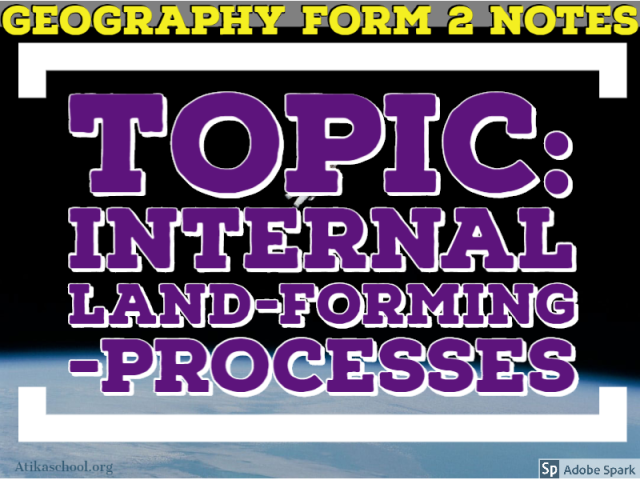- HIGH SCHOOL RESOURCES
- >
- High School Notes and Tutorials
- >
- GEOGRAPHY NOTES & TUTORIALS
- >
- Geography Form 2 Notes and Other Resources
- >
- Geography Form 1 Notes - Internal Land-Forming Processes
Geography Form 1 Notes - Internal Land-Forming Processes
About 'Internal Land-Forming Processes' Notes
The Internal Land-Forming Processes Form 1 notes kit is the third topics in Form 1 Geography curriculum and a creation of 21st century notes for scholars who are seeking to learn geography with aims of improving grades now and in the future.
The notes are prepared with the expertise required and necessary for the mastering of contents and attitude change.
What is unique about these notes?
each page has a pad where students can script short notes and file for future reference.
the notes have KCSE Internal Land-Forming Processes questions and answers and upgraded every-time a final KCSE examinations has been done.
these notes are setup for class use and personal studies. A teacher can also use them to issue assignments and peer learning processes.
these notes are printable, downloadable and in PDF format
the notes are accompanied with gorgeous pictures and excerpts to put more emphasis on important points.
a group of teachers and students who have used these notes before you have given us a positive feedback and approved them for use.
Pricing:
Plan 1: Use a credit card:
Proceed to 'Add to Cart'
It will cost you only 0.3 Euros
Equivalent of approximately Ksh 34/=
Plan 2: Using Mpesa
Copy the SKU Code above
Send Ksh 30/= to 0728 450425 [Maurice Nyamoti]
Fill this form Mpesa Form
Plan 3: Are you a Member?
Open this link DOWNLOAD FROM DRIVE
Want to be a member? See details here... PRICING
INTERNAL LAND-FORMING PROCESSES
Specific Objectives
- define earth movements
- explain the causes of horizontal and vertical earth movements
- explain the theories of Continental Drift and Plate Tectonics
- define folding, faulting, vulcanicity and earthquakes
- explain the processes of folding, faulting and vulcanicity
- describe types of folds, faults and forms of vulcanicity
- explain the resultant features due to folding, faulting and vulcanicity
- explain the causes of earthquakes
- describe how earthquakes are measured
- account for the or distribution of earthquake zones, fold mountain systems and features due to faulting and vulcanicity
- explain the significance of the resultant features of folding, faulting, vulcanicity and the effects of earthquakes.
Content
- Earth Movements
- Definition
- Types
- Horizontal
- Vertical
- Causes
- Theories of:
- Continental Drift
- Plate Tectonics
- Folding
- Definition
- Processes
- Types of folds and the resultant features
- World distribution of fold mountain systems
- Significance of folding to human activities
- Faulting
- Definition
- Processes
- Types of faults and the resultant features
- A study of the Great Rift Valley
- World distribution of features due to faulting
- Significance of faulting to human activities
- Vulcanicity
- Definition
- Types and resultant features
- World distribution of features due to vulcanicity
- Significance of vulcanicity to human activities
- Earthquakes
- Definition
- Causes
- Measurement
- Distribution of major earthquake zones of the world
- Effects of earthquakes
On Sale
On Sale
History Notes Form 1, Form 2, Form 3 and Form 4 in Slideshow ('Powerpoint', '.pptx')
We Would Love to Have You Visit Soon! |
Hours24 HR Service
|
Telephone0728 450425
|
|
8-4-4 materialsLevels
Subjects
|
cbc materialsE.C.D.E
Lower Primary
Upper Primary
Lower Secondary
Upper Secondary
|
teacher support
Other Blogs
|
